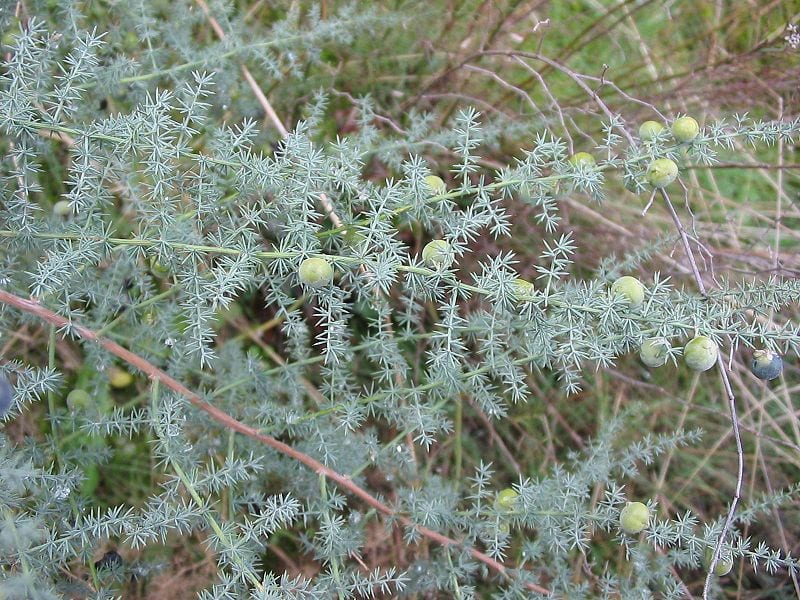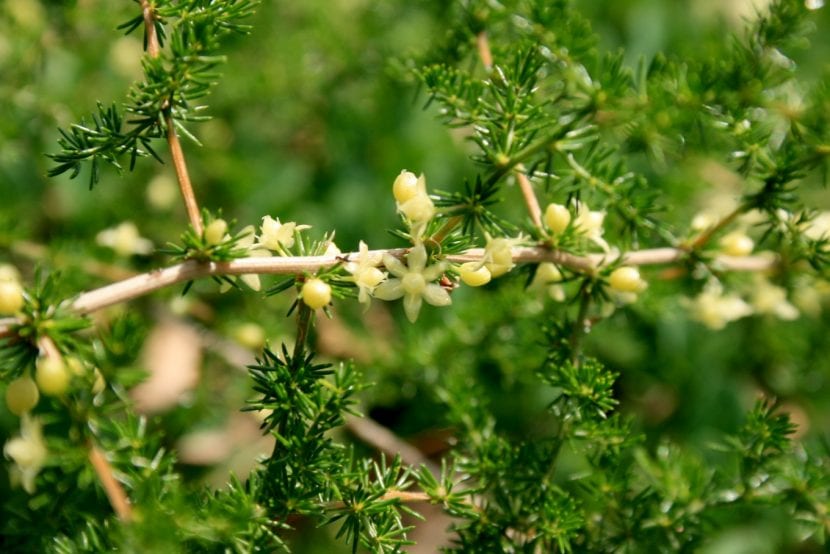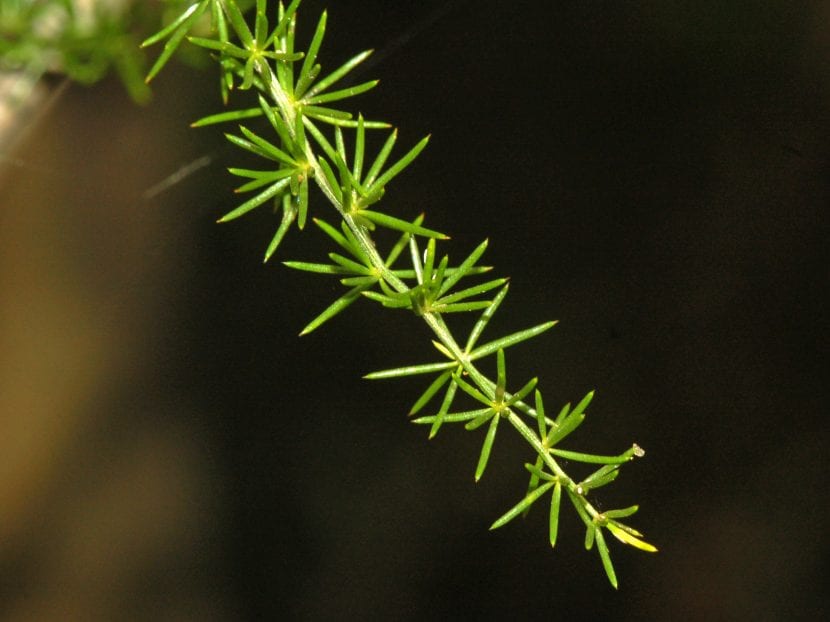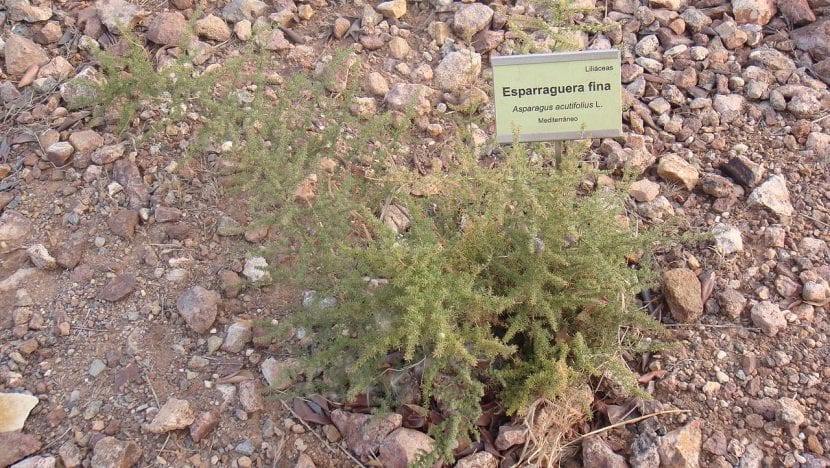
Image - Wikimedia / Alberto Salguero
Do you like to go looking for asparagus? I really love it. I fondly remember all the walks I take with the family when we go out: my mother and brother, for example, have trained eyesight: they locate them when the rest of us have only had time to see the plant. Wild asparagus are one of those that grow in the fields, so it is not uncommon for each season to collect several piles.
But It cann cultivate? Well the answer is yes. Actually, any plant - unless it is protected - can be had in the vegetable garden, garden or in a pot. The most interesting thing about Asparagus is that they resist drought very well, and well cooked they are delicious 😉.
Origin and characteristics

Image - Wikimedia / Sten Porse
It is a lively plant -lives several years- originally from the Mediterranean basin. We find it in the south of France, in the Iberian Peninsula (except in points near the Atlantic Ocean), the Balearic Islands, Italy and Greece. Its scientific name is Asparagus acutifolius and belongs to the genus sparrow grass. It grows on the sides of the roads, and in dry fields, exposed to direct sun or in semi-shade.
It can take the form of a low liana, less than two meters, and differs from the rest of Asparagus species because instead of leaves as such, has cladodes which are modified, flattened leaves, and in this case they resemble the thorns that many cacti have but are somewhat more harmless. This is so because, if the Mediterranean region is characterized in something, it is by the scarce rainfall, so one way to avoid the loss of water is to have cladodes instead of conventional foliage.
Blooms towards the end of summer. The flowers are very small, about a centimeter in diameter, white. The fruit is also a small drupe, one centimeter.
What are their cares?

Image - Wikimedia / Hectonico
If you want to have a specimen in your garden, patio or balcony, we recommend providing the following care:
Location
The wild asparagus must be abroad, either in full sun or in semi-shade.
Earth
It will depend on where you have it 🙂:
- Flower pot: use substrates with a pH of 7 or 7,5, such as universal (on sale here). Mix it with 30-40% perlite, river sand, or the like for good drainage, which will prevent the roots from rotting.
- Garden: the soil must be clayey, with good drainage.
Irrigation
Rather little. I would even tell you to water it only if you have it in a pot, about twice a week. In the garden, and as long as it has been planted for more than a year, irrigation will not be so necessary because, remember, that in its natural habitat it hardly rains (in my area, for example, south of Mallorca, there are only 350mm per year distributed between spring and autumn).
Subscriber
Not very necessaryOnly in spring is it advisable to add some fertilizer so that it can grow strongly and, therefore, so that it can produce the asparagus itself. Use organic fertilizers, such as compost, egg and banana peels, and so on.
If you are going to grow it in pots, use liquid fertilizers, otherwise the roots could be damaged by the worsening of the drainage caused by the powder fertilizers.
Wild asparagus multiplication

Image - Wikimedia / Hectonico
Wild asparagus multiply by seeds in spring, as follows:
- The first thing you have to do is fill a seedling tray with universal growing medium.
- Then, water thoroughly, making sure it is well soaked.
- Then, plant a maximum of two seeds in each socket, and cover them with a thin layer of substrate.
- Next, place the seedling tray inside another plastic tray without holes, outside, in semi-shade.
- Finally, you have to keep the substrate always moist, filling the tray that does not have holes.
If all goes well, they will germinate in about 14 days or so.
Planting or transplanting time
Towards the end of winter. If you have it in a pot, transplant every two or three years.
Rusticity
It is a plant that resists frosts of up to -7ºC.
What uses is it given?

Image - Wikimedia / Nachosan
Culinary use
Wild asparagus are used as culinary plants. Young stems and suckers are harvested from late winter to late spring, and are used to prepare various recipes, such as scrambled asparagus with egg, cooked, recipes with meat and fish, etc.
Its flavor is bitter, but not too much (I don't like bitter food at all, I eat these asparagus in tortillas with great pleasure 😉).
They are rich in folic acid, potassium, and fiber. As they do not contain fat or cholesterol, they are one of those foods that cannot be lacking in a healthy and balanced diet.
Medicinal use of wild asparagus
Both the rhizome and the root are used to treat urinary tract infections; however, we do not recommend its use without first consulting a physician.
What did you think of the wild asparagus?